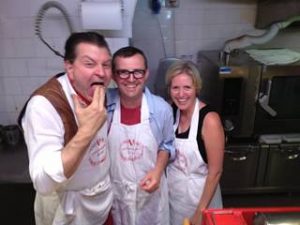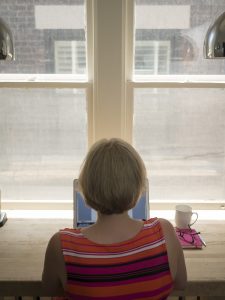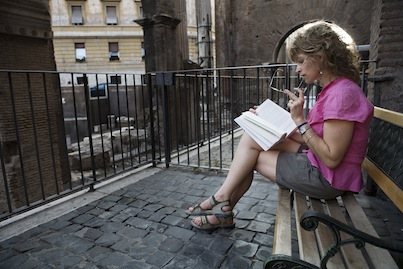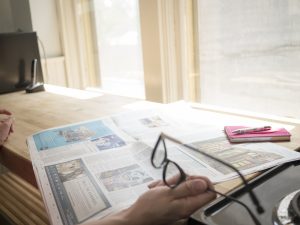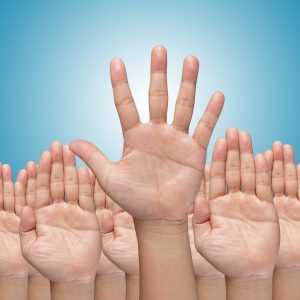 I went to a high school that assigned summer reading. This was fortunate, since I was the kind of high school student who absolutely adored being assigned summer reading. Often, I read everything on the list of options provided by the school, although I was only required to read a selection. Now that I have sons, I recognize this behavior as unusual, but at the time it seemed perfectly normal, part of the natural rhythm of summer.
I went to a high school that assigned summer reading. This was fortunate, since I was the kind of high school student who absolutely adored being assigned summer reading. Often, I read everything on the list of options provided by the school, although I was only required to read a selection. Now that I have sons, I recognize this behavior as unusual, but at the time it seemed perfectly normal, part of the natural rhythm of summer.
Upon our return, during the first week of school, we would be asked to write an essay that linked overarching themes of the various, otherwise unconnected novels, together. This summer, I have midlife disappointment on my mind, since it is one of the themes of my own novel, The Hole in the Middle (coming out in December 2013). Perhaps it’s not surprising, then, that my brain has been teasing midlife themes out of all of the books I’ve been reading.
First out of the gate for comment is Sheryl Sandberg’s Lean In. I confess that I’ve been surprised by the furor that has erupted over the book. I don’t think it says anything revolutionary, and I very much doubt that Sandberg does either. If you’ve had even glancing contact with any feminist theory over the past twenty years (and most people who studied liberal arts at a university during this period have), the ideas articulated here won’t surprise you. The freshness comes from the biographical details of Sandberg’s journey to the top echelons of business, rather than from the social science evidence that she uses to bolster her arguments.
Sandberg has an appealing voice, and she makes some pithy observations that have stayed with me. For example, I loved her comparison of careers to marathons, where male runners are encouraged to keep going and make it to the finish line, while female runners are told not to push themselves so hard. I can’t tell you how often I’ve been told – mostly by people who love me and want the best for me – that I need to relax, enjoy life more and generally be less busy. But I’m not happy unless I’m busy (see Leah Eichler’s article ‘Is being super busy so bad?’), so my challenge is to find a way to channel enough energy into realizing my professional ambitions without having the rest of my life come crashing down.
In some ways, the most interesting thing about Sandberg’s book has been the reaction to it. Sandberg doesn’t think that her advice applies to all women. She is speaking to a specific demographic: highly educated and ambitious women who choke off their leadership potential through their own choices – choices that Sandberg argues are often premature or unnecessary. These years matter to whatever legacy you want to leave behind you, she argues, and in this she is absolutely right. Yes, they are hectic and overwhelming and defined largely by other people’s needs. But if women consistently curtail their own ambitions, they are likely to feel unfulfilled and resentful by the time their kids need them less (which may be never, according to people I know with adult children).
What legacy do you want to leave behind you? This question is central to The Fault In Our Stars, a young adult love story about kids dying of cancer. I don’t normally read YA, and I’m glad I didn’t realize that this novel was classified as such before I picked it up, because it’s just a very good book about the big ideas that matter at every stage of life. Hazel and Augustus have both had close brushes with death when they meet in a cancer support group. They are both startlingly intellectual and unsentimental about their experiences (in contrast to Augustus’s parents, who decorate their home with embroidered ‘encouragements’).
Hazel is living on borrowed time. Augustus, on the other hand, is in remission. This gives him the luxury of worrying about the mark he wants to leave on the world. Hazel, on the other hand, is only concerned with doing no harm. She won’t eat animals, in order to minimize the number of deaths she is responsible for. She resists a relationship with Augustus, since the parental grief she will leave behind is already more responsibility than she wants. Hazel insists that a small life can be a life well-lived, and that the only mark that matters is the one we leave on those who have loved us.
But not everyone is a Hazel. In The Interestings, Meg Wolitzer introduces a group of talented teenagers at Spirit-in-the-Woods, a summer camp for the arts. All of them are special, even gifted; and all of them long to stand out as ‘interesting’ in the wider world of adulthood. Alone among them, Ethan Figman, a cartoonist, will enjoy artistic and material success. His wife, Ash Wolf, will benefit from his status and wealth, which she will leverage into a respected career as the artistic director of a feminist theatre. But Jules Jacobson, the central character of the novel, will abandon her dreams of becoming a comedic actress and instead become a psychotherapist married to a depressive ultrasound technician.
As the characters age, and enter the difficult territory of middle-age, Jules is tormented by envy. She is smart, witty and driven, but she realizes that these qualities aren’t enough to set her apart. However large her dreams, it is obvious now that they won’t come true, and she is crushingly disappointed. Her life is a small one, and unlike Hazel, she cannot be satisfied with it.
I think Sandberg might say that Jules needs to lean in, to let go of the unrealistic dreams of youth and invest in a career that plays to her manifold strengths. Her patients think that she is a good therapist, we are told, but Jules seems oddly disengaged from her job, resigning it entirely at one point to return to Spirit-in-the-Woods for a short and ill-considered stint as Camp Director. Undoubtedly, she has not had the luck that her friends have had (Ethan’s genius, Ash’s beauty and wealth) but neither has she pursued professional success in the way that Ethan and Ash have done, and it is this failure that has made her life less interesting.
All in all, I think these books would make for a kick-ass essay, if I were returning to high school this fall (with extra points assigned for providing a midlife interpretation of a YA novel). And now, I’m going to cleanse my palate with a little genre fiction. Happy summer reading!
 Anyone who thinks that the year starts in January doesn’t have school-age children. The rest of us understand that September is the month of fresh starts, clean slates and ambitious resolutions. And this year, I’m tackling family dinner.
Anyone who thinks that the year starts in January doesn’t have school-age children. The rest of us understand that September is the month of fresh starts, clean slates and ambitious resolutions. And this year, I’m tackling family dinner.
